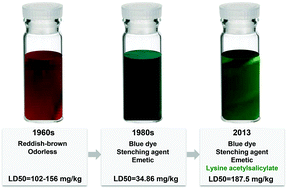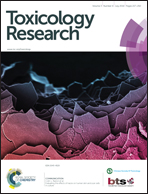Lysine acetylsalicylate improves the safety of paraquat formulation in rats by increasing its elimination and preventing lung and kidney injury†
Abstract
The incorporation of lysine acetylsalicylate (LAS) in the commercial formulation of paraquat (PQ), Gramoxone®, has been shown to significantly increase the survival of intoxicated mammals while maintaining the herbicidal effect. The aim of the present study was to clarify the mechanisms involved in the protective effect of LAS in a rodent model through monitoring PQ levels and the histological and biochemical biomarkers of toxicity in male Wistar rats following intoxication with PQ formulations in the absence and presence of LAS. Gramoxone® and the formulation with LAS were administered by gavage at the doses of 125 mg kg−1 of PQ and 125 mg kg−1 of PQ + 316 mg kg−1 of LAS, respectively. The obtained results showed that LAS improves the safety of PQ formulation by increasing its elimination and preventing lung and kidney injury. LAS prevented the biochemical and histological alterations in lung induced by PQ measured at the end of 24 h and 48 h. This was evidenced by a significant reduction in lipid peroxidation, the maintenance of reduced glutathione levels and decreased levels of oxidized glutathione, as well as the normalization of the urinary biomarkers, creatinine and N-acetyl-β-glucosaminidase. LAS treatment also caused a significant reduction in PQ-induced activation of nuclear factor kappa B (NF-κB) in the lung. The results allow us to conclude that lysine acetylsalicylate improves the safety of PQ formulation in rats by increasing its elimination and preventing lung and kidney injury.


 Please wait while we load your content...
Please wait while we load your content...